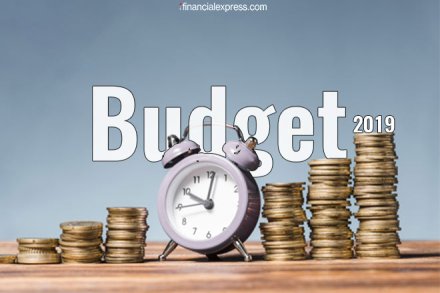Union Budget 2019 India: It may be interesting to know that the so-called middle/ upper middle salaried income people are potentially one of the highest contributors to the country’s direct taxes. It is believed that corporates are the biggest contributor to taxes. However, the individual salaried class is not far behind. This is true, not only in India, but also in the developed economies like the USA.
It is not unknown that non-corporate assessees have been steadily increasing the base of taxpayers in India. Interestingly, as per the FY 2016-17 data, out of the total of 4.45 crore return filers, non-corporate return filers account for more than 98 per cent of the taxpayer base. As per the same data source, non-corporate tax collections account for over 40 per cent of the total tax collections.
For the FY 2016-17, the Direct Tax receipts amounted to Rs 8.50 lakh crore, which grew by 14.5 per cent over the FY 2015-16 (Rs 7.42 lakh crore). It is worth highlighting that collections from Corporation Tax increased by meagre 7 per cent, from Rs 4.53 lakh crore in FY 2015-16 to Rs 4.85 lakh crore in FY 2016-17. However, the direct tax collections from non-corporate increased by a whopping 21.5 per cent from Rs 2.80 lakh crore in FY 2015-16 to Rs 3.41 lakh crore in FY 2016-17.
In fact, the Finance Minister, in his Interim Budget 2019 speech, specifically highlighted the contributions made by this segment of tax payers and extended a “thank you” for their contributions.
This section of taxpayers, therefore, should also be the most deserving one to have relief on taxes. More so, since they are the ones who already have most stringent tax deduction at source affected by the employer and are well scrutinized on almost all the possible reliefs that are possible under the law (which is also thinning year after year). It would be seen that last the few budgets, including the interim budget, have seemingly tried to address the same, but unfortunately, it has only come with little or almost no benefit to this section of tax payers.
For instance, in the Interim Vudget 2019, where the tax bracket was extended to NIL tax rate for the tax payers that had an income of up to Rs 5 lakh, it was only a lower threshold of tax payers which got the benefit and not the ones that contribute to the tax kitty the maximum. This was because the slabs were not essentially changed uniformly for all the assessees, but some relief was given only to the lower section of tax payers, which were already contributing a very small proportion to the total tax revenue.
The Budget 2018 reintroduced a standard deduction of flat Rs 40,000 for the salaried employees. This did give some optical respite to this section of taxpayers. However, in essence, the net result only transformed into a negligible amount of benefit for this salaried class earning taxable income above a threshold, say Rs 10 lakh. This was on account of the fact that the same budget withdrew medical allowance of Rs 15,000 and transport allowance of Rs 19,200, that were otherwise available.
Further, the same budget also introduced additional education cess of 1%, leading to a further cut on the benefit of Rs 40,000, extended to this section of tax payers. In this scenario, the tax saved for taxpayers will depend on the tax slab that one falls into. Broadly speaking, with the above addition of the cess, the net impact for salaried class taxpayer with Rs 10 lakh+ taxable income, leads to a net saving of only a few hundred rupees. A marginally higher group of taxable income, say 12 lakh+, would have to pay more tax than before.
Enough being said, there is indeed a strong case that the new budget regime should provide real relief to the middle/ upper middle salaried class which is the most compliant sector already. The concentration should rather be towards finding ways to pin the leakage of taxes by the non-salary bracket, like small businesses/ sole proprietorships, where no control systems are available at the source level.
In light of the above, it will only be fair to ask that the most judicious, most compliant and most contributing section of individuals — i.e the middle/ upper middle salaried bracket, providing the most to tax revenues — deserve something more tangible than a mere “thank you” in this upcoming budget.
(By Anupam Jain, Partner, Nangia Advisors (Andersen Global)
